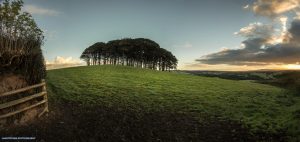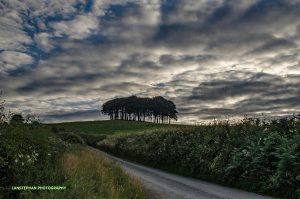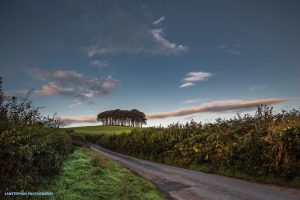
Anyone who has ever been in and out of Cornwall will recognise the beloved ‘nearly home’ trees. The small copse of trees, found on the A30 near Lifton, marks the border between Cornwall and Devon and is a familiar sight for anyone leaving on their travels or returning home. Until 1991, the copse was seen only by the privileged locals. That was the year that the A30 dual-carriageway bypassed the meandering and twisty old route through Lewdown and Lifton, cutting through the rural area along the foothills of Broadwoodwidger. Immediately, the small woodland of 140 beech trees that has since inspired many artists and poets over the years and known as Cookworthy Knapp or Cookworthy Clump was revealed.
Artist, Katie Stoneman lives in nearby Lifton, she says the trees “stand out” and often feature in her paintings. ‘For me, I love where I live. I love the West Country and I very rarely put any houses or people in anything I paint because I just think we’re so lucky to live somewhere so beautiful and these trees are just standout. They’re glorious‘.
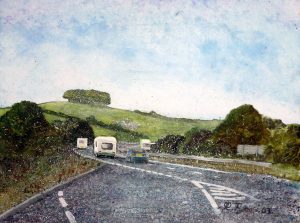
The cherished sight is known by many different names according to people living in and visiting the area – ‘Cornwall Beyond’, ‘Grandma’s Trees’, ‘nearly home’ ‘Welcome home’ or ‘coming home trees’, ‘the unicorn wood’ and ‘fairy wood’ – are just a few of the most regularly used nicknames.
Historians believe the trees were planted at the top of the hill nearly 120 years ago – in about 1900 – however, there are several suggestions as to why.
One of the most romantic rumours was that the plantation was constructed by a farmer in memory of his late wife. Some say that this is why the aerial view of the copse looks to be in the shape of a heart. Another nickname for the copse, the Trafalgar Clump, could suggest that the trees were planted with that particular war in mind, however, that sounds sketchy, given that the battle took place in 1805, nearly 100 years before they were planted.
Another suggestion is that trees were planted in clumps on hills all over the country by cattle drovers, to mark water sources so they knew where they could take their animals to drink. Local residents have also said that they were under the belief that the trees mark an ancient burial site – one woman said she thought the landmark was intended to show where a king was buried. In a discussion on Facebook, others have offered their explanations as to what the trees are for.
Fayenpaul Macbow said: “I have heard it was to do with the Cardinham family and he planted the trees in the shape of his heart to show his love – think there are a few clusters about Cornwall.”
Maxine Towl said: “I was told by a lady whose family had lived in the area for years, that when we had a leper colony in Newport, it was used as a burial ground as the bodies had to be buried well away from the town and then the trees grew.”
Dean Barrett added: “It was all trees at one time and the rest were cut down for timber in one of the wars but the farmer didn’t want them all cut so left a few on top of the hill, so I’m told.”
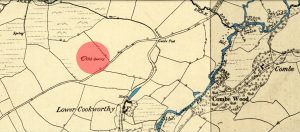
However, the reality is far more mundane, as the copse was most probably planted to conceal what was a quarry and to offer game cover on the crown of that hill just above Lower Cookworthy as can be seen in this 1870s map of the area. In a later map, the copse is known as Knaphill Plantation.
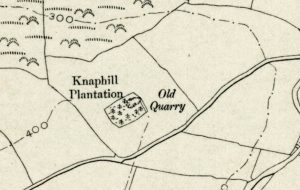
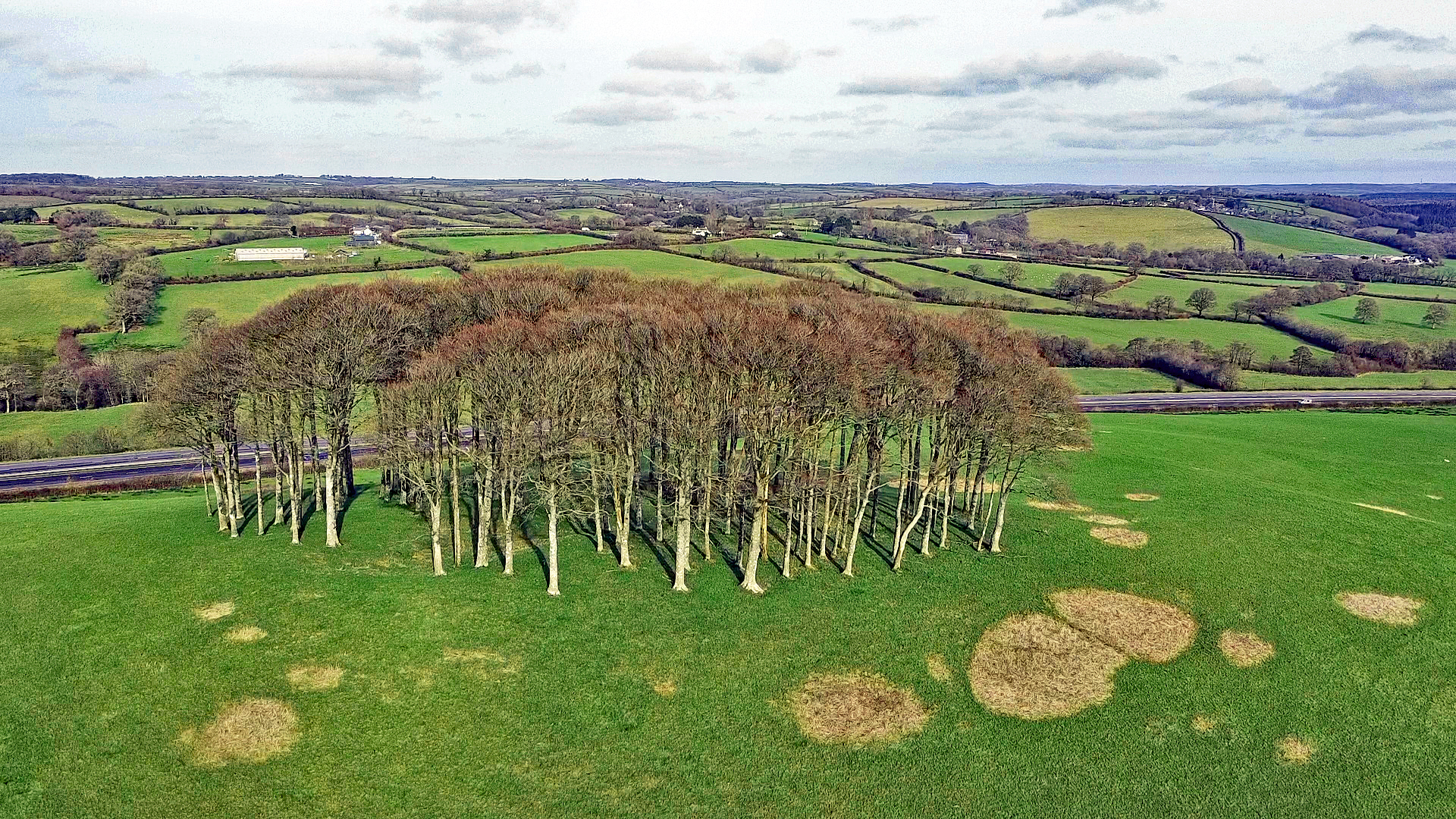
The people who may have the best idea of how the trees came to be there are the Maynard family.
They bought the clump of trees and the surrounding land in the 1970s, the land is now farmed but the trees remain standing tall. Jo Maynard said in an interview with ITV in 2019, ‘These trees were planted by the Lifton Park estate and they were planted as game cover. They were originally planted with beech in the middle and then they were surrounded by fir trees and then with laurel in the understory. But all that remains is the circle of beech trees.’
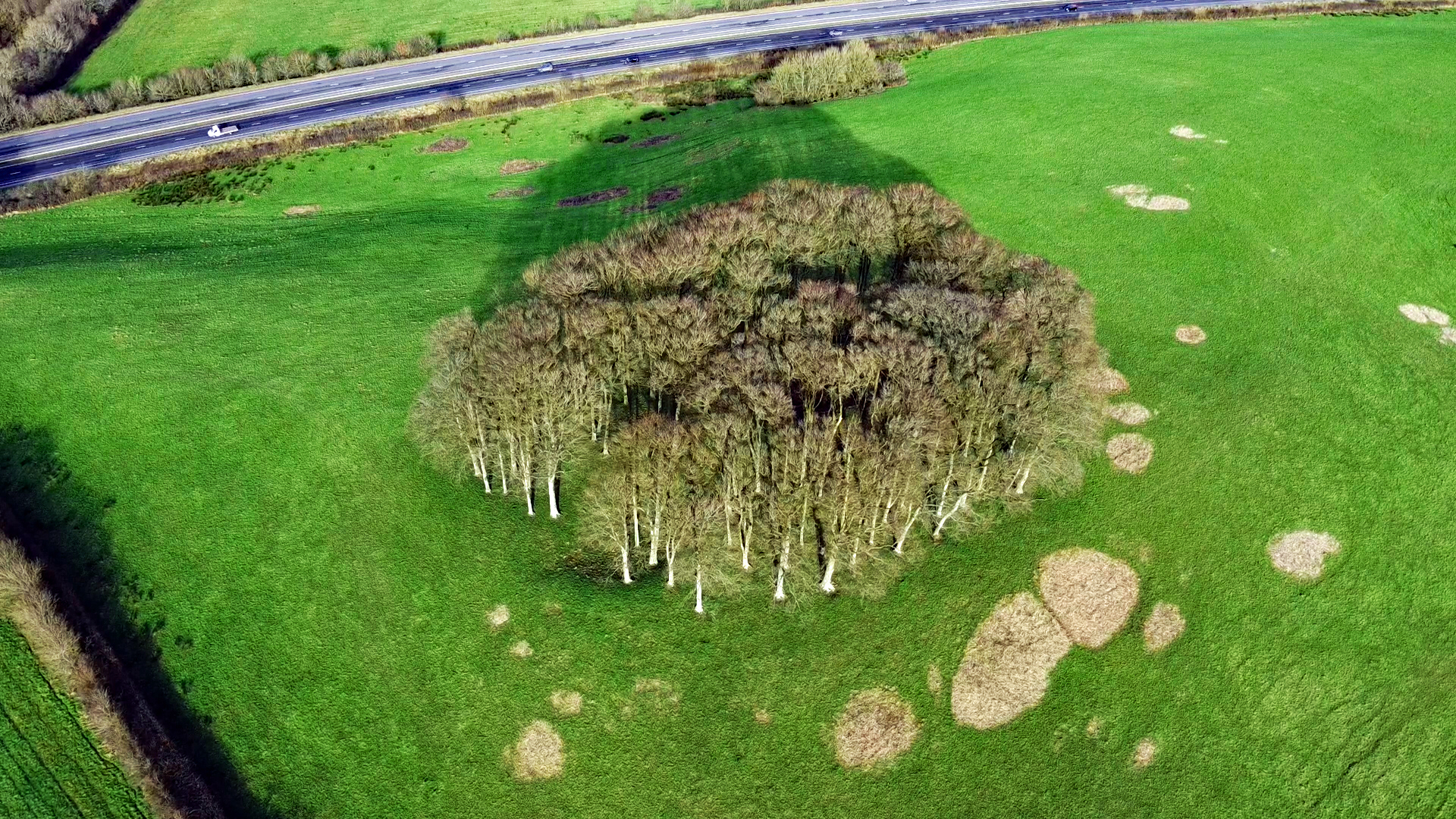
Cookworthy Knapp by Lanstephan Photography
Visits: 813

